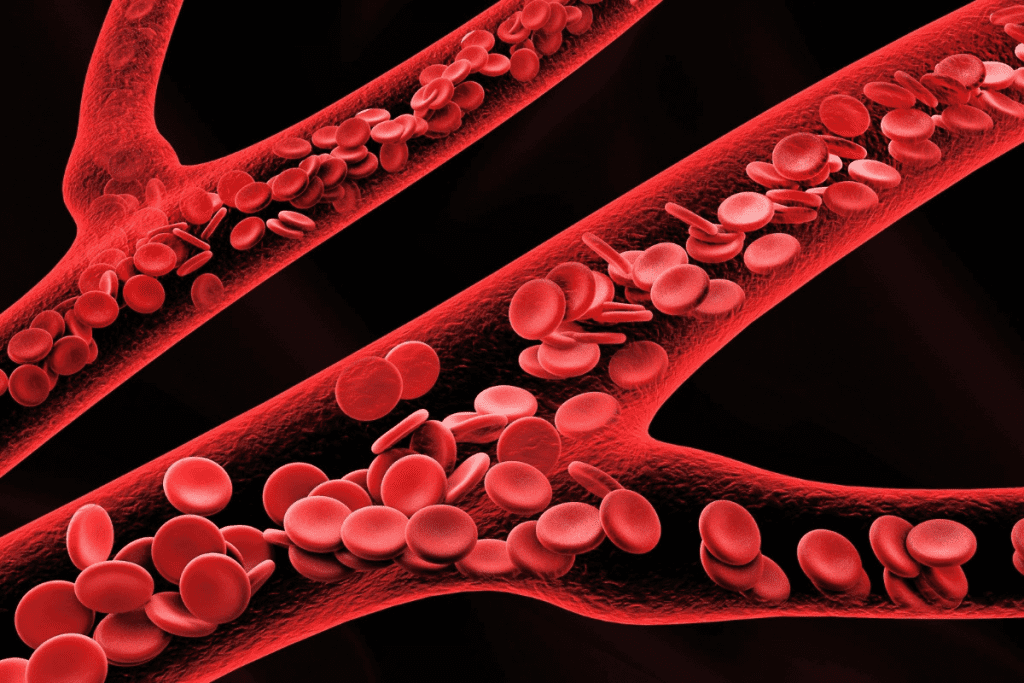Last Updated on November 13, 2025 by
Can chemo be adjusted for low WBC? Learn about blood counts and what type of cancer causes low hemoglobin. Crucial facts for treatment decisions.
Chemotherapy is a key treatment for many cancers. But, it can cause low white blood cell (WBC) counts. Low WBC counts raise the risk of infections. It’s important to manage this well.

Changing chemotherapy plans can help reduce these risks. Some cancers lead to low hemoglobin levels, making treatment harder. Knowing how cancer, chemotherapy, and blood counts are linked is key to good treatment plans.
It’s key to know how chemotherapy affects blood cells to manage side effects. Chemotherapy is a main treatment for many cancers. But, it has a big impact on the body’s blood cells.
Chemotherapy targets fast-growing cells, like cancer cells and blood cell-making cells in the bone marrow. This can cause problems, including changes in blood cell counts.
Chemotherapy can weaken the bone marrow’s ability to make blood cells. This can lead to low counts of white blood cells, red blood cells, and platelets. Low WBC symptoms include more infections, tiredness, and fever.
The bone marrow is key for making white blood cells, red blood cells, and platelets. Chemotherapy can mess with this, making it hard for the body to fight off infections, carry oxygen, and stop bleeding.

Normal blood counts vary from person to person. But, chemotherapy can change these counts a lot. For example, a normal white blood cell count is between 4,500 and 11,000 cells per microliter. In leukemia patients, the leukemia white blood cell count range can be too high or too low.
Chemotherapy can push counts outside these ranges. This means doctors need to adjust treatments to lower risks.
A study shows, “Managing chemotherapy-induced myelosuppression is key to avoid treatment delays and lower complication risks.”
This highlights the need to closely watch blood cell counts during chemotherapy.
It’s important to know about chemotherapy-induced myelosuppression to handle cancer treatment risks. Myelosuppression is when blood cell production drops because of bone marrow damage. This is a common side effect of chemotherapy.
Myelosuppression happens when chemotherapy harms the bone marrow. This makes it hard for the bone marrow to make blood cells like white blood cells (WBCs), red blood cells (RBCs), and platelets. This can cause infections, anemia, and bleeding problems.
The damage to the bone marrow comes from chemotherapy’s direct effects on fast-growing cells. This makes it hard for the body to make blood cells, leading to low counts.
The time it takes for blood cell counts to drop varies. It depends on the chemotherapy type, dose, and how the body reacts. WBC counts usually start to fall a few days to a week after starting treatment. The lowest point, or nadir, is usually around 7-14 days later.

Chemotherapy can affect WBC, RBC, and platelet counts in different ways. Low WBC counts make infections more likely. Low RBC counts cause anemia, leading to tiredness and weakness. Low platelet counts can cause bleeding problems.
Knowing these differences helps manage chemotherapy side effects. It also helps adjust treatment plans as needed.
Understanding what type of cancer causes low hemoglobinIt’s important to know which cancers lead to low blood cell counts. This knowledge helps in managing and treating the condition. Low hemoglobin and blood cell counts can affect how well a patient does and their quality of life.
Leukemia is a cancer that affects the blood and bone marrow. It messes with how blood cells are made. This can cause problems with white blood cell counts. Leukemia CBC results often show issues like too few or too many white blood cells.
Solid tumors, like those in the breast, lung, and colon, can also mess with blood cell production. These tumors can spread to the bone marrow. This can stop the bone marrow from making enough blood cells, leading to anemia and thrombocytopenia.
Several cancers are often linked to low blood counts. These include:
These cancers harm the bone marrow’s ability to make healthy blood cells. Knowing which cancer is causing the problem is key to finding the right treatment.
Healthcare providers can improve patient outcomes by understanding which cancers lead to low blood counts. They can then tailor treatments to address these issues.
Low blood cell counts can cause health problems. It’s important to spot symptoms early. Chemotherapy can harm blood cell production, leading to issues like leukopenia, anemia, and thrombocytopenia. Each condition has its own signs that patients and doctors should know.
A low white blood cell count makes infections more likely. Symptoms include:
These signs happen because the body can’t fight off infections well. Prompt medical attention is necessary if you notice any of these symptoms.
Anemia, or low red blood cell count, brings on symptoms like:
These signs happen because the body’s tissues don’t get enough oxygen. Severe anemia can really affect your life and might need medical help.
It’s key to tell apart blood count changes from cancer and those from chemotherapy. Cancer can mess with blood cell production, and some cancers, like leukemia, directly harm blood cells. Chemotherapy, though, targets fast-growing cells, including those in the bone marrow. Keeping an eye on blood counts and understanding the context helps figure out the cause.
Doctors look at the cancer type, treatment stage, and patient health when checking blood count changes.
Chemotherapy protocols often need changes when patients have low white blood cell (WBC) counts. This ensures treatment is safe. Finding the right balance is key to avoid severe neutropenia and infections.
Dose reduction guidelines depend on how low the WBC count is. For example, if it drops below 1,000 cells/μL, doses might be cut or delayed. This helps the bone marrow recover.
The exact WBC levels for dose reduction vary. It depends on the treatment and the patient’s health. Usually, a count below 3,000 cells/μL means a dose reduction or delay.
Treatment delay criteria are based on WBC count and overall health. Decisions are made for each patient, considering neutropenia severity, infections, and bone marrow recovery.
Doctors use guidelines and their own judgment to decide on delays. For instance, a count below 1,500 cells/μL with fever or infection might lead to a delay.
Studies show adjusted chemotherapy works for low WBC counts. They look at dose reductions and delays to reduce severe neutropenia risks.
For counts below 7.0, adjusted protocols help lower infection risks. These plans are made for each patient’s specific needs.
Managing chemotherapy is all about balancing safety and effectiveness. Doctors aim to find the best dose to avoid harm while keeping treatment effective.
Using G-CSF to boost WBC counts is one strategy. By managing doses and using supportive care, doctors ensure patients get effective treatment safely.
Supportive treatments help manage chemotherapy’s side effects on blood cells. They aim to reduce risks from low blood cell counts. This ensures cancer treatment can continue without big breaks.
G-CSF therapy boosts white blood cell production in the bone marrow. It’s key for patients on chemotherapy, as it lowers the risk of infections. It helps keep treatment schedules on track.
G-CSF therapy is given through injections. The dose depends on the patient’s health and how they respond. It greatly cuts down the risk of serious infections from chemotherapy.
Other meds help with low red blood cell and platelet counts. For example, erythropoietin-stimulating agents boost red blood cell production. This reduces the need for blood transfusions. Thrombopoietin receptor agonists help with platelet production, lowering bleeding risks.
These medications mimic the body’s natural hormones for blood cell production. They support red blood cell and platelet production. This helps patients tolerate chemotherapy better and stay healthy.
Nutritional support is key for managing blood cell counts during chemotherapy. A balanced diet with essential nutrients supports blood cell production. Foods high in protein, iron, and vitamins are best.
Patients should eat foods that help blood cell production, like leafy greens and lean meats. Staying hydrated is also important for healthy blood cells. Nutritional counseling helps patients make good dietary choices during chemotherapy.
To reduce the risks of chemotherapy, healthcare providers use many strategies. They aim to protect patients from low blood cell counts. Keeping blood cell counts in check is key to avoid infections, anemia, and bleeding.
Regular blood tests are vital during chemotherapy. The test frequency depends on the chemotherapy type, patient health, and risk factors. Usually, tests are done weekly or biweekly to check white blood cell, red blood cell, and platelet counts.
Common blood tests include:
Patients with low WBC counts face a higher risk of infections. To prevent infections, they should avoid close contact with sick people. They should also practice good hygiene, like frequent handwashing, and avoid undercooked foods.
Monitoring plans are tailored to each patient’s risk factors. These include age, overall health, and past experiences with chemotherapy. Patients with a history of severe myelosuppression may need more frequent tests and closer monitoring.
New technologies have made blood count monitoring more accurate and efficient. For example, point-of-care testing devices allow for bedside tests. This reduces the need for frequent lab visits.
Changing chemotherapy plans for each patient is a detailed task. It needs looking at many factors. These factors are key to making sure chemotherapy works well and is safe.
Age affects how well patients do with chemotherapy. Older people might get sicker from chemotherapy because their bone marrow isn’t as strong. So, chemotherapy dose adjustments are often necessary to keep it effective but safe.
Patients with health issues like diabetes or heart disease need special care with chemotherapy. These conditions can change how the body handles the drugs. Careful monitoring and adjustment of chemotherapy protocols are key to reducing risks.
Genetics play a role in how blood cells react to chemotherapy. Some genetic traits might make patients more likely to get very sick from chemotherapy. Knowing these traits helps doctors tailor treatments to each patient’s needs.
When changing chemotherapy plans, keeping quality of life in mind is important. The goal is to keep treatment effective while reducing side effects that harm a patient’s life quality.
By focusing on these factors, healthcare teams can make chemotherapy better. This improves outcomes and life quality for cancer patients.
It’s key to make cancer treatment better while keeping blood cells safe. Chemotherapy can harm blood cells, leading to infections and anemia. Healthcare teams can lessen these risks by understanding how chemotherapy affects blood cells.
They use supportive treatments like G-CSF therapy to keep blood cell counts up. It’s also important to watch blood cell levels and adjust treatment plans as needed. This way, they can make sure treatment works well without harming blood cells.
Managing chemotherapy’s effects on blood cells needs a detailed plan. This plan should consider each patient’s needs and monitor their blood cells closely. By focusing on blood cell health, doctors can improve treatment results and patients’ lives.
Low white blood cell count can make you feel very tired. You might also get sick more often. Feeling unwell is another common symptom. In serious cases, it can be life-threatening.
To increase white blood cells during chemo, G-CSF therapy is often used. Eating well and taking certain medicines can also help. These steps support blood cell production.
Leukemia and other cancers that harm the bone marrow can lower neutrophils. Chemo and radiation therapy also affect neutrophil counts.
Yes, leukopenia can mean cancer, like leukemia or lymphoma. But, it can also happen from chemo, radiation, or some medicines.
Low red and white blood cells make you tired and weak. Your skin might look pale. You could also breathe less easily and get sick often. Severe cases can be very dangerous.
Eating a balanced diet with fruits, veggies, and whole grains helps. Drinking plenty of water and resting well are also key. Vitamin C and zinc supplements can also help.
Leukemia’s white blood cell count varies by type. High counts often mean leukemia. But, some types might have low counts.
Low blood count could mean cancer, if you’re tired, losing weight, or getting sick a lot. But, it can also come from chemo, radiation, or medicines.
For low WBC, chemo doses might be cut or treatment delayed. The decision depends on how low the WBC is and your health.
Chemo adjustment follows guidelines based on WBC levels. There are rules for when to delay treatment. Monitoring is also tailored to each patient’s risk.
Adeel, M., et al. (2024). Quantifying anticancer drug toxicity on white blood cell counts: A review. Toxicology and Applied Pharmacology. https://www.sciencedirect.com/science/article/pii/S101836472300486X
Subscribe to our e-newsletter to stay informed about the latest innovations in the world of health and exclusive offers!